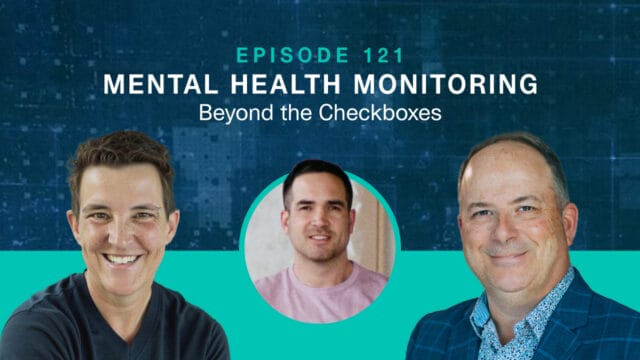
Holiday Bonus Episode: Safety Tips You Need This Season | Risk Matrix Episode 122
THE RISK MATRIX Cutting-edge podcast on occupational safety and risk management. Hosted by industry titans: JAMES JUNKIN, MS, CSP, MSP,…
Discover the importance of using the OSHA hierarchy of controls to ensure workers have properly fitted personal protective equipment.

Hazards exist in facilities and job sites in all industries; therefore, strategies to protect workers – particularly the design and manufacturing of personal protective equipment (PPE) – are essential. The priority should be to follow the Occupational Safety and Health Administration (OSHA) hierarchy of controls, including elimination, substitution, or engineering control(s) of hazards at their source or along the path between that source and the worker.
This article briefly discusses the OSHA hierarchy of controls, the risks of poorly fitting PPE, and what employers can do to protect their workers better.
On July 20, 2023, OSHA issued a notice of proposed rulemaking to modify 29 C.F.R. 1926.95(c) of the construction regulatory standard set to require construction employers to ensure that their employees have personal protective equipment (PPE) that “properly fits”.
OSHA already has specific standards that address PPE fit for general industry (29 CFR 1910.132(d)(1)(iii)) and maritime (29 CFR 1915.152(b)(3)), so this proposed change to the construction regulations will align with requirements already in place in other industries.
However, this pending revision is only as effective as the means employers use to enforce it, and they should always use the OSHA hierarchy of controls to identify and rank safeguards to protect workers from hazards from the most to least effective, including the following:
Applying the hierarchy of controls aside, PPE is often essential due to some risk to the person handling equipment or performing tasks. The other controls are preferred but sometimes practical or feasible depending on the task, frequency, or the environment.
Therefore, employers, supervisors, and safety professionals must be knowledgeable of the activities performed by employees to ensure the appropriate PPE is available for employees and that it fits.
Unproperly fitted PPE places users at higher risk for injuries and can distinguish between an employee being safely protected or dangerously exposed. In some cases, ill-fitting PPE may not protect an employee, and in other cases, it may present additional hazards to that employee and employees who work around them.
Some examples of injuries that could be related to poorly sized PPE are:
Although OSHA stated in the notice of proposed rulemaking that PPE that does not correctly fit is an issue for “smaller construction workers,” it follows that PPE that is too small for workers can also cause problems.
What can employers do to comply with the proposed standard and “do right” by their employees?
First, they should assume that the current PPE issued to employees does not have a “universal fit” and then focus on “proper fit” concerns by auditing the current PPE program and choices.
Employers should also consider the body proportions and configurations of the employee population. Employee body size and proportions vary considerably between hips, chests, thighs, and, most significantly, employee gender.
Hands, feet, faces, ears, ear canals, weight, and height are also factors to consider in PPE fit. Employers should form a PPE review committee that is diverse and, therefore, can render opinions that do not rely on anthropometric data relevant to the standard body (male or female).
The most glaring gap in PPE over the years has been a lack of PPE for women of differing sizes and proportions. The safety profession has focused resources over the last decade to ensure that this gap is being brought to light and addressed. Those interested in looking further into finding and addressing gaps in women’s PPE fit between standard fit for men can find more information at the following links:
According to OSHA, whatever employers do to assess the gaps in PPE fit and protection within the employee population, PPE must consider workers’:
The Center for Disease Control (CDC)/National Institute for Occupational Safety and Health (NIOSH) has also indicated that workers with different disabilities, job functions, characteristics of occupational settings, and size of employers (e.g., small versus large employers) are other important factors to consider in an organization’s PPE program and employee outfitting.
Although the construction PPE fit language is still in the rulemaking stage, all PPE an employer purchases must consider the physical measures of a person’s size, form, and functional capacity (anthropometry) to ensure the protection of the worker from hazards and the employer from the risks of significant injuries and illnesses caused by exposures due to ill-fitting PPE. The demographics of the U.S. construction industry are changing rapidly and currently consist of approximately 11 million workers, with increasing percentages of Latinx and female workers. For more information about OSHA’s construction standard Notice of Proposed Rulemaking requiring that fit be considered in PPE programs, check out OSHA’s formal notice at the following link: https://www.osha.gov/news/newsreleases/national/07192023.
Contact us today to learn more.
James A. Junkin, MS, CSP, SMS, ASP, CSHO is the chief executive officer of Mariner-Gulf Consulting & Services, LLC and the chair of the Veriforce Strategic Advisory Board. He is Columbia Southern University’s 2022 Safety Professional of the Year (Runner Up) and a much sought after master trainer, keynote speaker, podcaster, and author of numerous articles concerning occupational safety and health.


THE RISK MATRIX Cutting-edge podcast on occupational safety and risk management. Hosted by industry titans: JAMES JUNKIN, MS, CSP, MSP,…

THE RISK MATRIX Cutting-edge podcast on occupational safety and risk management. Hosted by industry titans: JAMES JUNKIN, MS, CSP, MSP,…
We’ll send you practical and insightful supply chain risk management info that can benefit your business. Plus, important company updates that keep you in the loop.
